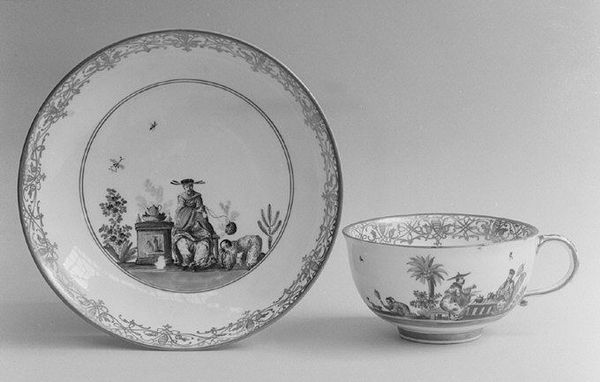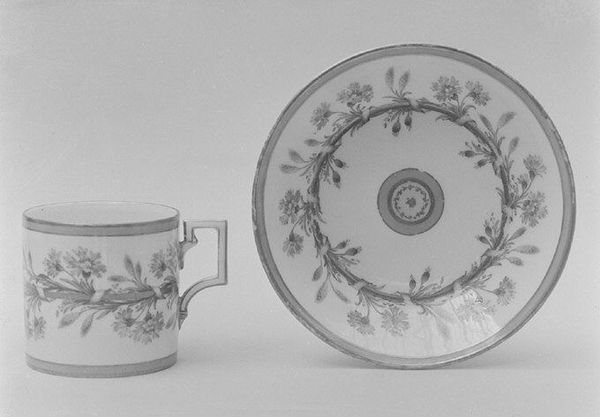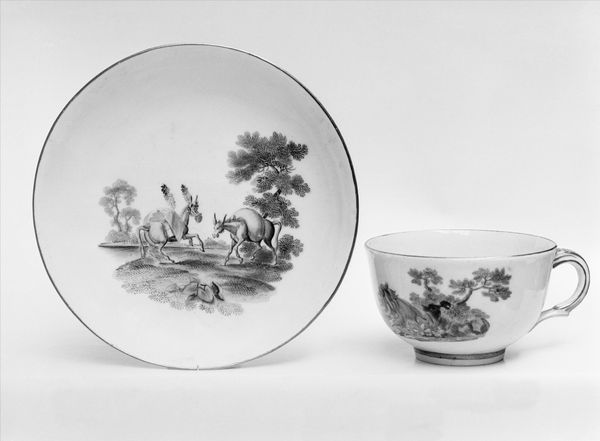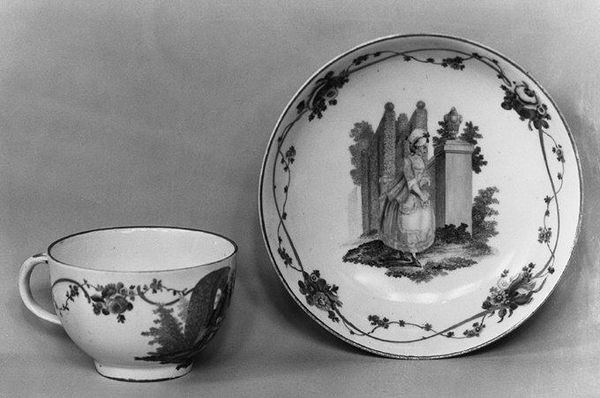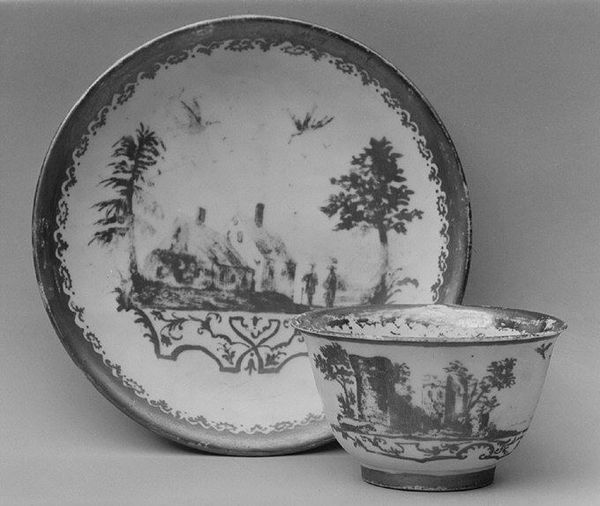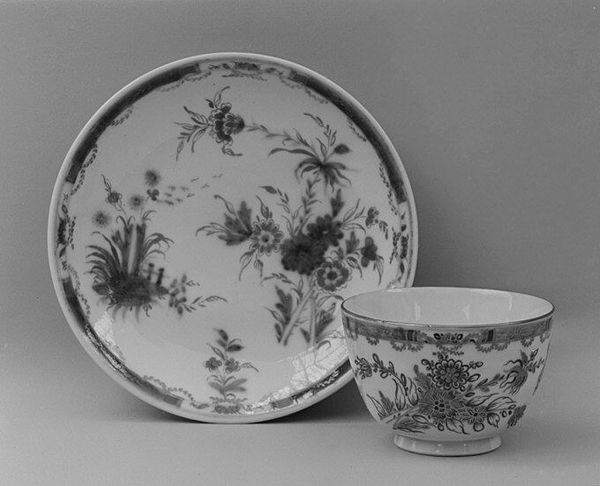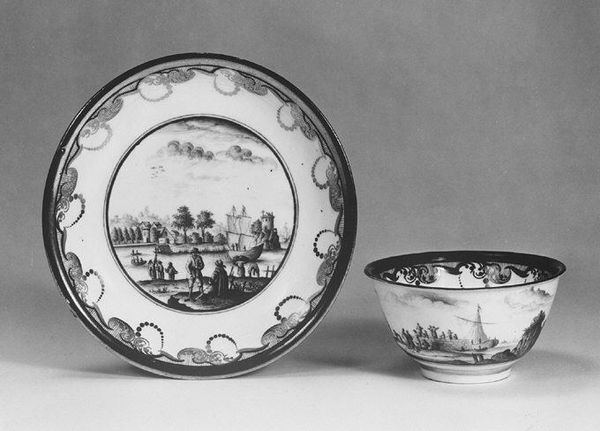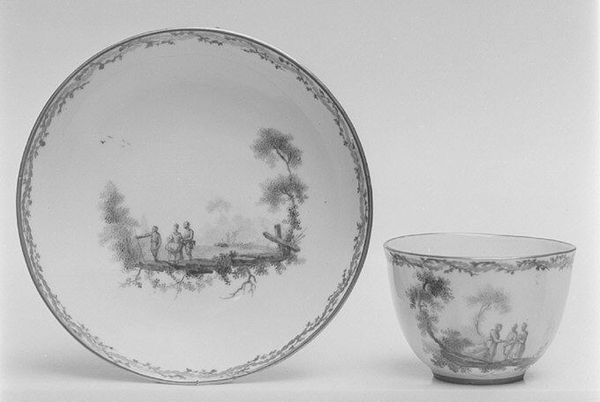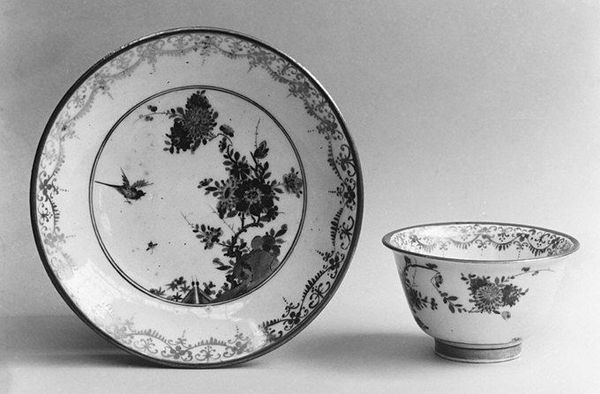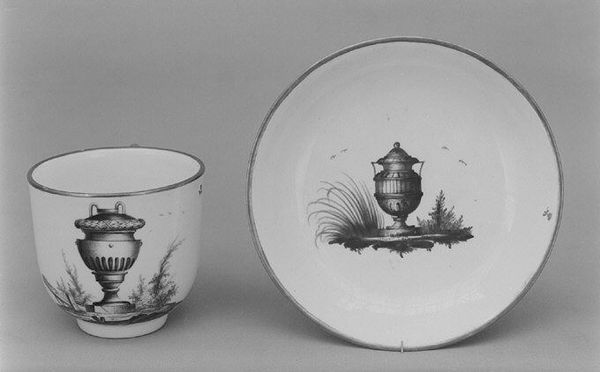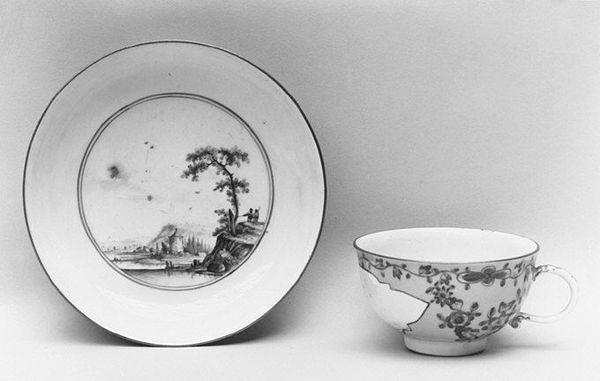
Dimensions: Height (cup .225): 2 1/2 in. (6.4 cm); Diameter (saucer .226): 4 5/8 in. (11.7 cm)
Copyright: Public Domain
Editor: So, this is "Cup and Saucer," made around 1770 to 1780 by the Royal Porcelain Manufactory. It's porcelain, and I'm struck by how these delicate landscape drawings contrast with what must have been quite a luxurious, status-conscious function. What can you tell me about it? Curator: Well, seeing porcelain like this, particularly from this period, it's vital to consider its social role. This wasn't everyday tableware; it signified wealth, status, and participation in a refined, aristocratic culture. How do you think the landscapes chosen play into that? Editor: It feels idealized. A pretty scene, very much controlled nature. Does it relate to garden design? Curator: Absolutely. The Rococo style prized artifice and a certain vision of nature tamed. The porcelain itself was a global commodity, remember. It's speaking to the owner’s worldliness, taste, and connections to power. But who could access such luxuries? Editor: Not the general public, surely. I'm seeing it almost as a form of propaganda – broadcasting privilege through everyday objects. Curator: Precisely! Consumption itself becomes a performance. And it happened in parlors, salons—places where social and political alliances were solidified. Would you say that adds another layer to how we perceive it today? Editor: Absolutely. It makes me reconsider the "decorative arts." It's not "just" pretty; it's actively constructing social hierarchies. I’ll never look at a teacup the same way again! Curator: That's exactly it! Everyday objects can carry immense social and political weight.
Comments
No comments
Be the first to comment and join the conversation on the ultimate creative platform.
